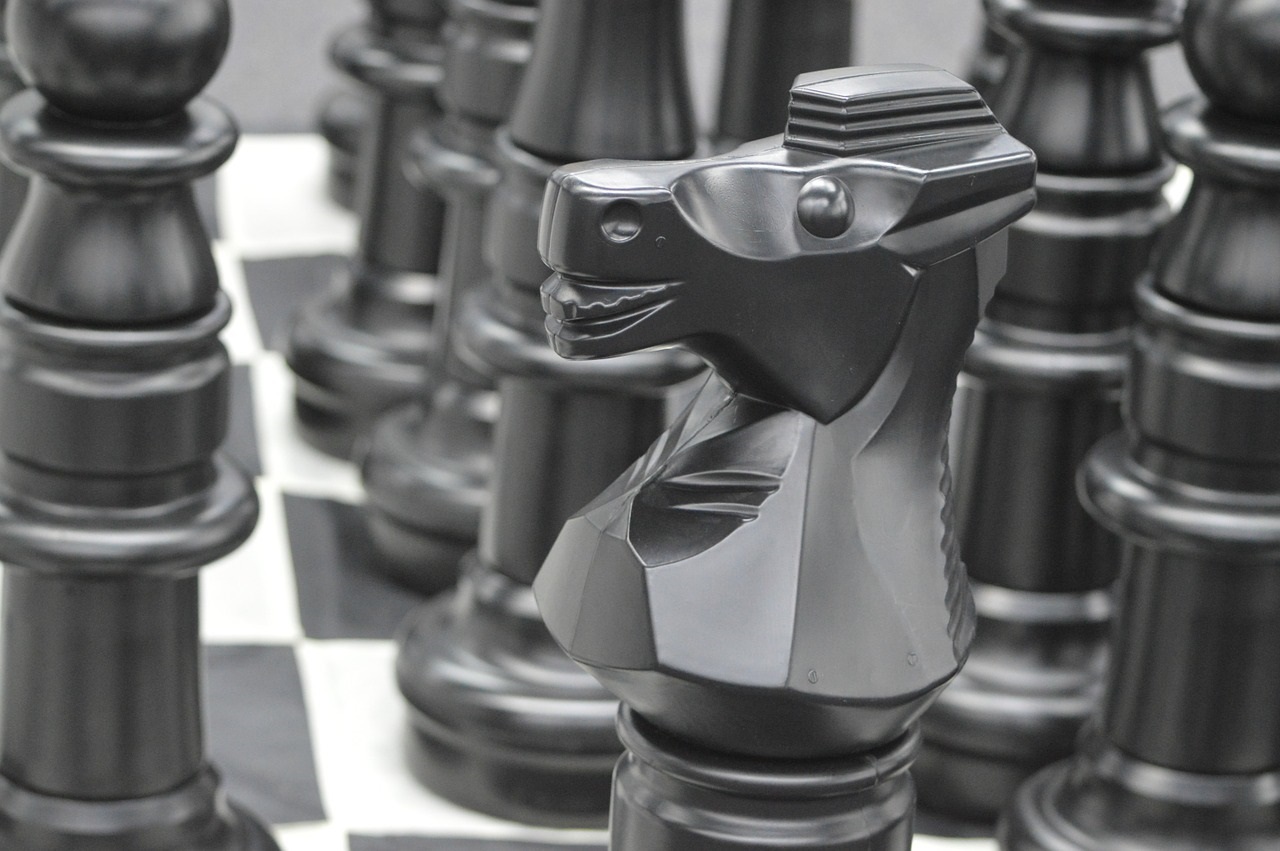Be a Game Changer: Research
 In chess, the knight has properties that make it an important piece to keep in the game as long as possible. It can jump pieces, and its move is unique in that it is an L-shape and not in a straight line. Like other pieces, it also has the ability to fork an enemy, in other words, attack two pieces simultaneously. However, to be most effective, the knight needs to be in the center of the action and as close to the middle of the board as possible.
In chess, the knight has properties that make it an important piece to keep in the game as long as possible. It can jump pieces, and its move is unique in that it is an L-shape and not in a straight line. Like other pieces, it also has the ability to fork an enemy, in other words, attack two pieces simultaneously. However, to be most effective, the knight needs to be in the center of the action and as close to the middle of the board as possible.
Research in writing is a lot like that. Research needs to be in the process of writing a novel at all times and, as required, even be central to the writing of a novel. Obviously, it should happen at the beginning as a writer crafts her idea in her mind. Research should also be in the middle of the process when she’s adding in more information related to the setting. Finally, she should use research when polishing the novel. What does research look like during each of these phases?
The beginning. No matter if the writer is an indie writer or with a trad publisher, research allows him to paint a clear picture of the setting, the characters, and themes that may emerge as he drafts the novel.
The middle. Research enables the writer to hone a facet of the novel to be sharp, clear, and concise. For example, a novelist has placed a character in a Middle Eastern souk, but he doesn’t feel like he’s painted a solid picture of what a Middle Eastern souk would look like. What does he do? He gets his hands on any images he can find of Middle Eastern souks and paints a clearer picture of what the character sees, hears, and smells as he meets his top secret contact.
The end. Finally, the novelist is polishing his work. When he describes his character wearing sunglasses to the Middle Eastern souk, he uses the brand Ray Ban. Or is it Ray-Ban? Off he goes to research and find the correct spelling.
So, yes, while it’s easy to assume that research happens only once in a novel’s development, it occurs again and again.
Where do you go to research? Below are some brief ideas.
- The Internet – Of course! It should probably be your first stop, but keep going. It contains a plethora of material, almost too much, so avoid getting overwhelmed or paralyzed by the amount of information out there.
- Images – Check out stock image sites such as Google Images on the Internet. No, that doesn’t mean you have to buy any images, but they can give you ideas of about what people and places look like.
- Blogs – Want to know about Middle Eastern souks? Find someone who’s a travel blogger and read their blog.
- Interviews (Gasp! I have to talk to someone? Sort of) – Like what you see in an article or a blog post? Contact the writer. Most folks are happy to share their passions with others.
- Books (Yes, they’re a great resource) – Books can provide lots of background on cultures, places, and issues of the day for a novel’s setting. Don’t be shy about purchasing a book or checking one out from the library.
Like that knight on the chessboard, research should play a central part of a novel’s development. It doesn’t stop when the manuscript starts. Instead, it keeps moving throughout the development process. So don’t be afraid of it. Rather, embrace it.
This post does not mention any products. Therefore, I am not receiving any compensation for writing this post. I am disclosing this in accordance with the Federal Trade Commission’s 16 CFR Part 255:
Guides Concerning the Use of Endorsements and Testimonials in Advertising.”




No Comments